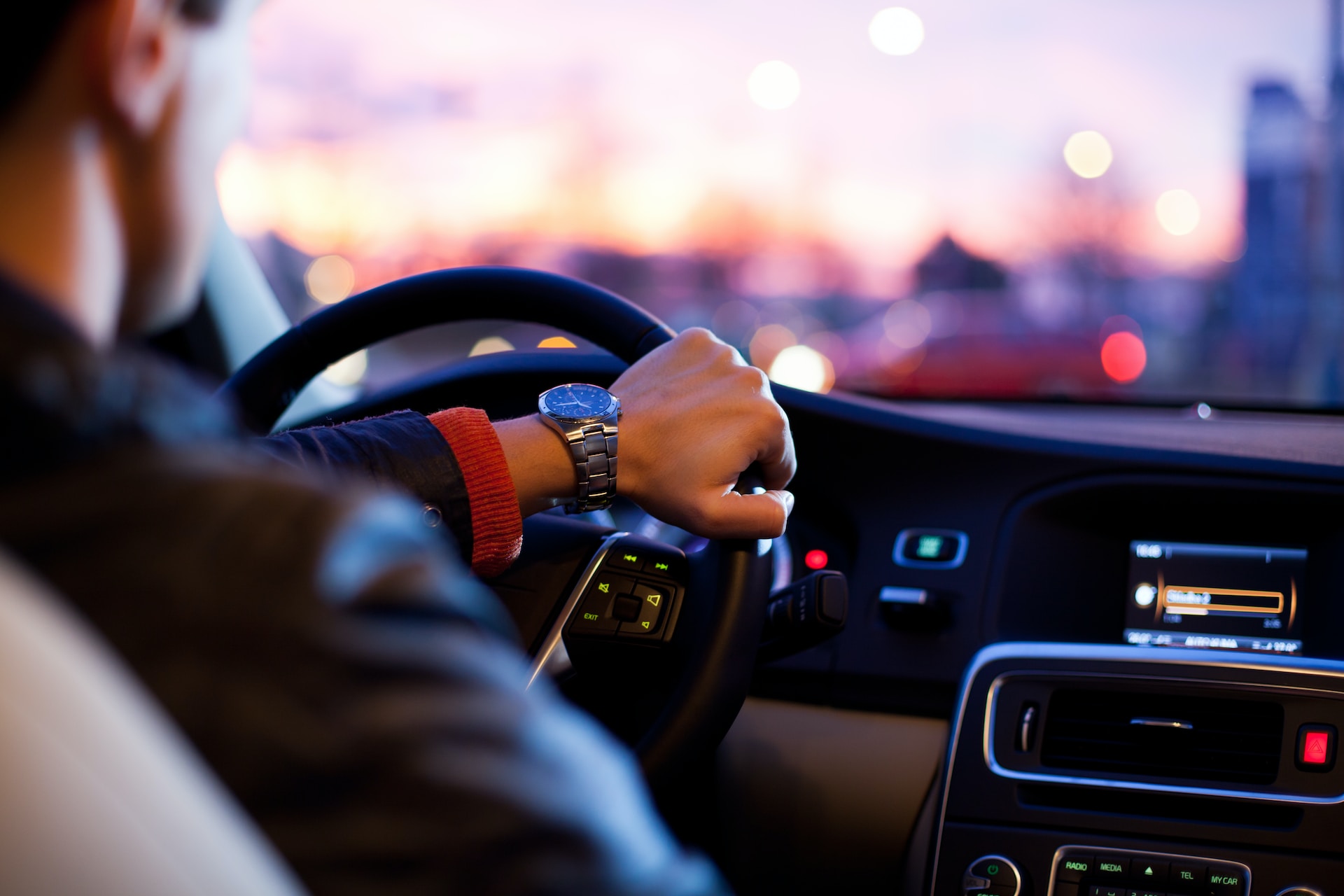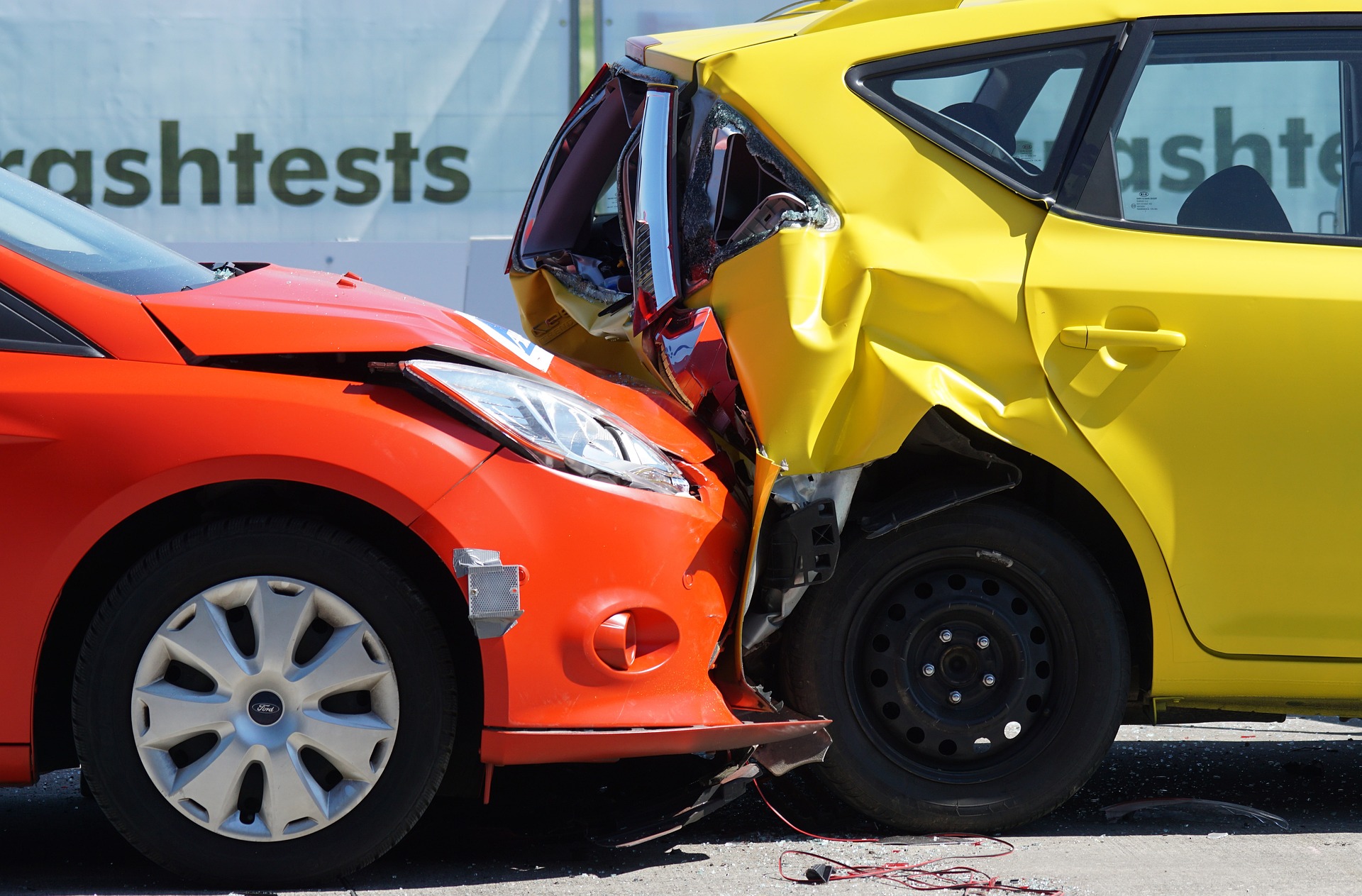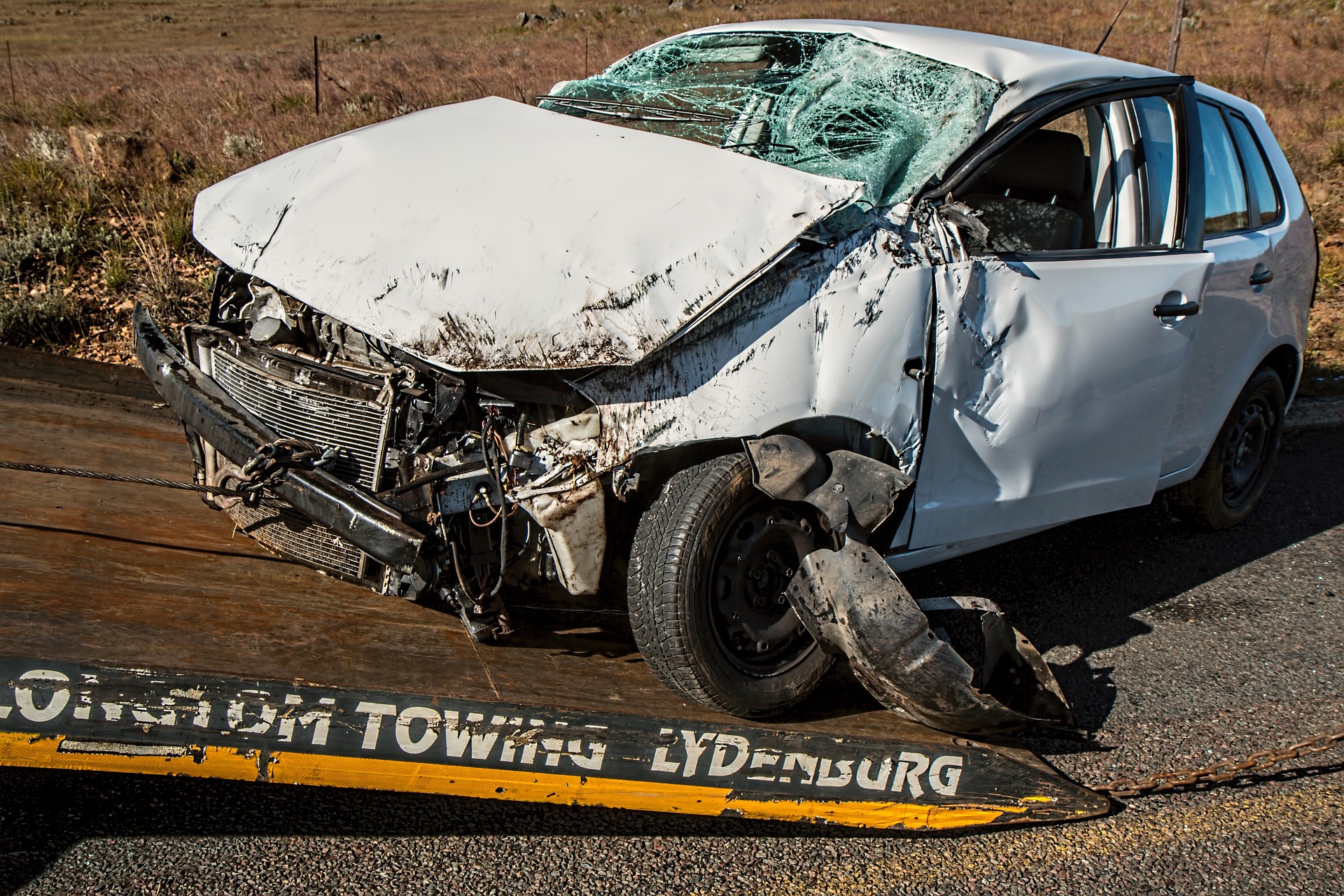Traffic accidents are a serious problem in Georgia. According to the Georgia Department of Public Health, motor vehicle crashes were the second leading cause of injury deaths and second leading cause of hospitalizations and ER visits in Georgia in 2020. In that same year, Georgia had the fourth greatest number of traffic fatalities (1,664) in the nation, even though Georgia has the eighth largest population in the United States.
What are the main causes of these tragic and preventable incidents? And more importantly, what can you do to avoid becoming a statistic?
In this article, we will explore the top 20 factors that contribute to traffic accidents in Georgia, based on data from the National Highway Traffic Safety Administration (NHTSA) and the Georgia Governor’s Office of Highway Safety (GOHS). We will also provide some tips and resources on how to stay safe on the road and protect yourself and others from harm.
1. Alcohol-Impaired Driving
Alcohol-impaired driving is one of the most dangerous and deadly behaviors on the road. It refers to driving with a blood alcohol concentration (BAC) of 0.08% or higher, which is the legal limit in Georgia and most states. Alcohol affects your judgment, reaction time, coordination, vision, and concentration, making you more likely to crash or cause a crash.
In 2020, alcohol-impaired driving was involved in 402 fatalities in Georgia, accounting for 24% of all traffic deaths. This was an increase from 355 fatalities in 2019. Georgia ranked ninth among all states for alcohol-impaired driving fatalities per 100 million vehicle miles traveled in 2020.
To prevent alcohol-impaired driving, you should:
- Never drink and drive. If you plan to drink, designate a sober driver, use a ride-sharing service, call a taxi, or take public transportation.
- If you see someone who is about to drive impaired, intervene and offer them a safe alternative.
- If you see an impaired driver on the road, call 911 and report them to the authorities.
- Support local and state efforts to enforce drunk driving laws and raise awareness about the dangers of alcohol-impaired driving.
2. Speeding
Speeding is another major factor that contributes to traffic accidents in Georgia. It refers to driving faster than the posted speed limit or too fast for the road conditions. Speeding reduces your ability to control your vehicle, increases your stopping distance, and magnifies the impact of a crash.
In 2020, speeding was involved in 380 fatalities in Georgia, accounting for 23% of all traffic deaths. This was an increase from 260 fatalities in 2019. Georgia ranked seventh among all states for speeding-related fatalities per 100 million vehicle miles traveled in 2020.
To prevent speeding, you should:
- Obey the speed limit and adjust your speed according to the weather, traffic, and road conditions.
- Leave enough time for your trip and avoid rushing or being late.
- Be aware of the consequences of speeding, such as fines, points on your license, increased insurance rates, and potential crashes.
- If someone is tailgating you or pressuring you to speed up, move over and let them pass.
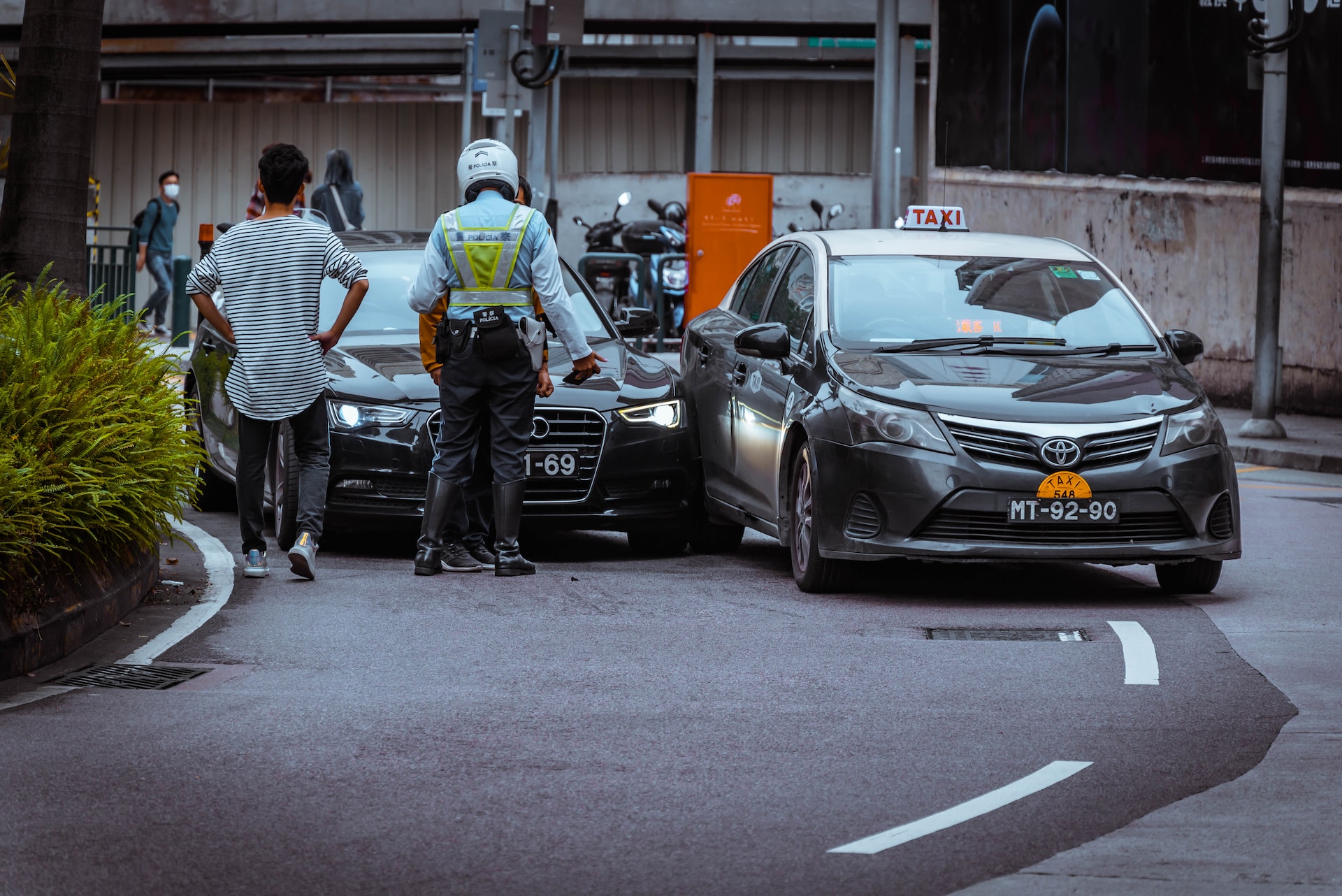
3. Unrestrained Occupants
Unrestrained occupants are those who are not wearing a seat belt or using a child safety seat when riding in a motor vehicle. Seat belts and child safety seats are proven to save lives and reduce injuries by keeping occupants inside the vehicle and distributing the force of a crash across stronger parts of the body.
In 2020, unrestrained occupants were involved in 465 fatalities in Georgia, accounting for 28% of all traffic deaths. This was an increase from 385 fatalities in 2019. Georgia ranked sixth among all states for unrestrained occupant fatalities per 100 million vehicle miles traveled in 2020.
To prevent unrestrained occupant fatalities, you should:
- Always wear your seat belt and make sure everyone in your vehicle is buckled up properly.
- Use an appropriate child safety seat for your child’s age, weight, height, and developmental stage
- Follow the manufacturer’s instructions and the Georgia law on how to install and use child safety seats correctly.
- Check your child’s safety seat regularly for recalls, expiration dates, and damage.
- Never place a child in the front seat or in front of an active airbag.
4. Distracted Driving
Distracted driving is any activity that takes your attention away from the primary task of driving. It can be visual (taking your eyes off the road), manual (taking your hands off the wheel), or cognitive (taking your mind off driving). Some common examples of distracted driving are texting, talking on the phone, eating, drinking, adjusting the radio, using a GPS, or talking to passengers.
Distracted driving is a growing problem in Georgia and nationwide. According to NHTSA, distracted driving was involved in 3,142 fatalities in the U.S. in 2019, accounting for 8.7% of all traffic deaths. In Georgia, distracted driving was involved in 177 fatalities in 2019, accounting for 11.9% of all traffic deaths.
To prevent distracted driving, you should:
- Put your phone away and turn it off or on silent mode while driving. If you need to make a call or send a message, pull over to a safe location or use a hands-free device.
- Avoid eating, drinking, grooming, or smoking while driving. If you need to do any of these activities, pull over to a safe location or do them before or after your trip.
- Set your destination and adjust your settings before you start driving. If you need to change them, pull over to a safe location or ask a passenger to help you.
- Limit the number and activity of passengers in your vehicle. If they are distracting you, ask them to stop or pull over to a safe location.
- Focus on the road and the traffic around you. Avoid daydreaming, zoning out, or getting angry at other drivers.
5. Motorcyclist Fatalities
Motorcyclists are more vulnerable than other road users because they have less protection and visibility. They are also more likely to be affected by road hazards, weather conditions, and other vehicles. According to NHTSA, motorcyclists are 29 times more likely than passenger car occupants to die in a crash per vehicle mile traveled.
In 2020, motorcyclist fatalities were involved in 192 fatalities in Georgia, accounting for 12% of all traffic deaths. This was an increase from 170 fatalities in 2019. Georgia ranked fifth among all states for motorcyclist fatalities per 100 million vehicle miles traveled in 2020.
To prevent motorcyclist fatalities, you should:
- Always wear a helmet and other protective gear when riding a motorcycle. Helmets are estimated to save 37% of motorcyclists’ lives in crashes.
- Follow the traffic rules and ride within your skill level. Avoid speeding, weaving, lane splitting, or riding under the influence of alcohol or drugs.
- Be visible and alert on the road. Use your headlights, signal your intentions, check your mirrors and blind spots, and watch out for other vehicles’ movements.
- Maintain your motorcycle properly and check it before every ride. Make sure your tires, brakes, lights, and other components are in good condition.
- Take a motorcycle safety course and refresh your skills regularly. You can find a list of approved courses in Georgia here: https://dds.georgia.gov/motorcycle-safety-program
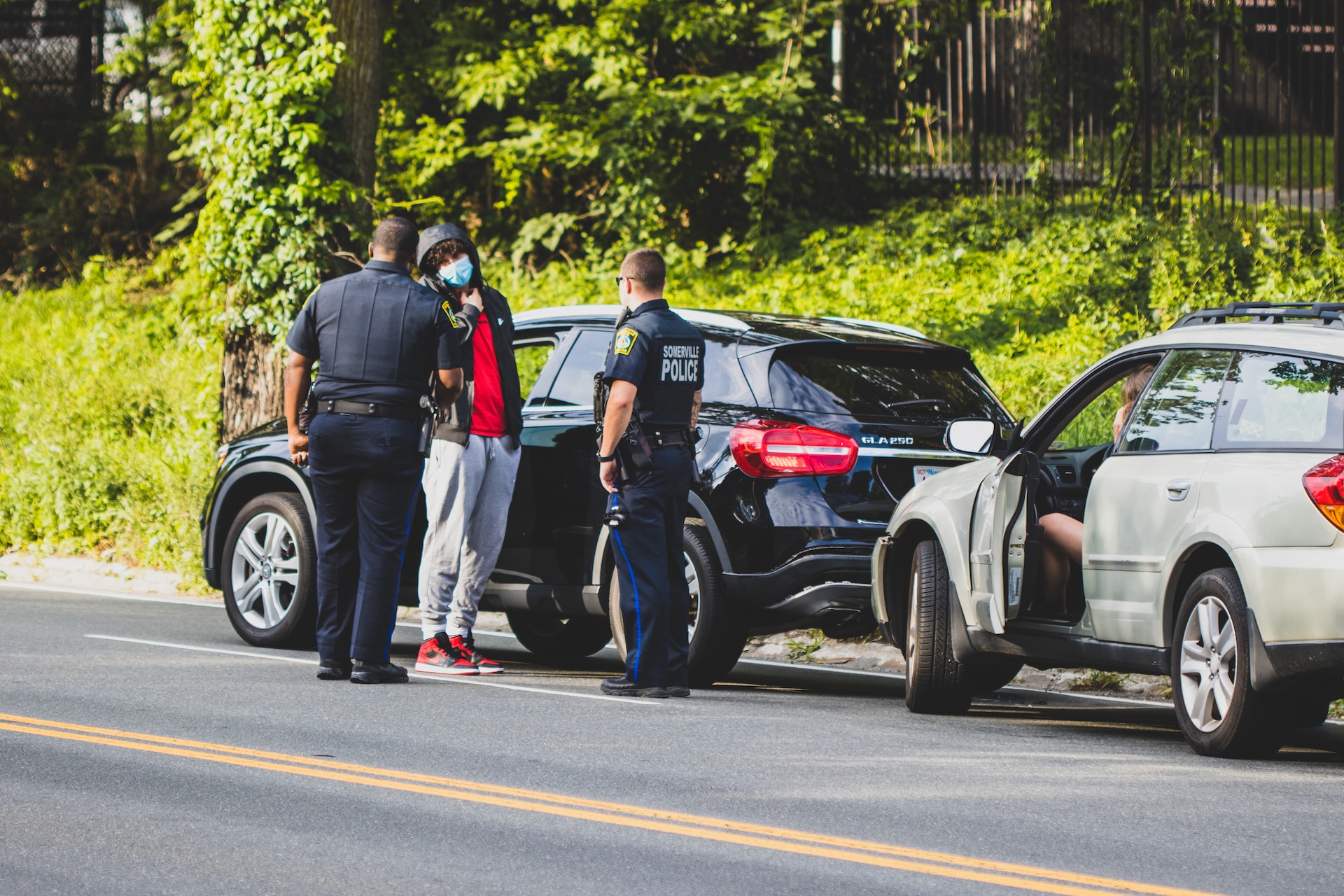
6. Pedestrian Fatalities
Pedestrians are also more vulnerable than other road users because they have no protection from vehicles or other hazards. They are also more likely to be affected by low visibility, poor lighting, or lack of sidewalks or crosswalks. According to NHTSA, pedestrians are 1.5 times more likely than passenger vehicle occupants to die in a crash per trip.
In 2020, pedestrian fatalities were involved in 279 fatalities in Georgia, accounting for 17% of all traffic deaths. This was an increase from 236 fatalities in 2019. Georgia ranked fourth among all states for pedestrian fatalities per 100 million vehicle miles traveled in 2020.
To prevent pedestrian fatalities, you should:
- Follow the traffic rules and signals when walking on or near the road. Cross at marked crosswalks or intersections, obey pedestrian signs and signals
- Be visible and alert when walking on or near the road. Wear bright or reflective clothing, carry a flashlight or use your phone’s light at night, and make eye contact with drivers before crossing.
- Avoid distractions and impairments when walking on or near the road. Do not use your phone, headphones, or other devices that can take your attention away from the traffic. Do not walk under the influence of alcohol or drugs.
- Use sidewalks or paths when available. If there are no sidewalks or paths, walk on the shoulder facing traffic and as far away from the vehicles as possible.
- Be extra careful when walking in areas with high traffic, low visibility, poor lighting, or no sidewalks or crosswalks. Watch out for vehicles turning or backing up, and avoid crossing multiple lanes of traffic.
7. Bicyclist and Other Cyclist Fatalities
Bicyclists and other cyclists are also more vulnerable than other road users because they have less protection and visibility. They are also more likely to be affected by road hazards, weather conditions, and other vehicles. According to NHTSA, bicyclists and other cyclists are 11 times more likely than passenger car occupants to die in a crash per trip.
In 2020, bicyclist and other cyclist fatalities were involved in 32 fatalities in Georgia, accounting for 2% of all traffic deaths. This was an increase from 21 fatalities in 2019. Georgia ranked 14th among all states for bicyclist and other cyclist fatalities per 100 million vehicle miles traveled in 2020.
To prevent bicyclist and other cyclist fatalities, you should:
- Always wear a helmet and other protective gear when riding a bicycle or other cycle. Helmets are estimated to reduce the risk of head injury by 60% and the risk of death by 37% in crashes.
- Follow the traffic rules and signals when riding a bicycle or other cycle on the road. Ride in the same direction as traffic, obey traffic signs and signals, signal your intentions, and yield to pedestrians and other vehicles.
- Be visible and alert when riding a bicycle or other cycle on the road. Use lights, reflectors, and bright or reflective clothing at night or in low visibility conditions. Make eye contact with drivers before crossing or turning. Watch out for opening doors, potholes, debris, or other hazards.
- Avoid distractions and impairments when riding a bicycle or other cycle on the road. Do not use your phone, headphones, or other devices that can take your attention away from the traffic. Do not ride under the influence of alcohol or drugs.
- Use bike lanes or paths when available. If there are no bike lanes or paths, ride on the right side of the road as far as practicable. If you need to move left to turn or avoid an obstacle, look behind you and signal before changing lanes.
8. Young Drivers
Young drivers are those who are between 15 and 20 years old. They are more likely to be involved in crashes than older drivers because they have less experience, maturity, and judgment behind the wheel. They are also more likely to engage in risky behaviors such as speeding, alcohol-impaired driving, distracted driving, or unrestrained driving.
In 2020, young drivers were involved in 206 fatalities in Georgia, accounting for 12% of all drivers involved in fatal crashes. This was an increase from 169 fatalities in 2019. Georgia ranked ninth among all states for young driver fatalities per 100 million vehicle miles traveled in 2020.
To prevent young driver fatalities, you should:
- Follow the graduated driver licensing (GDL) system in Georgia. The GDL system is designed to help young drivers gain experience and skills gradually before getting a full license. It has three stages: instructional permit (age 15), intermediate license (age 16-18), and full license (age 18+). Each stage has different requirements and restrictions on supervision, hours of driving, passengers, and cell phone use. You can find more information about the GDL system here: https://dds.georgia.gov/teen-drivers
- Practice driving with a parent, guardian, or other licensed adult. The more supervised driving hours you have, the more confident and skilled you will be on the road. You should aim for at least 40 hours of supervised driving, including 6 hours at night, before getting your intermediate license.
- Avoid risky behaviors when driving. Do not speed, drink and drive, text and drive, or drive without a seat belt. These behaviors can increase your chances of crashing or dying in a crash.
- Learn from your mistakes and improve your driving habits. If you get a ticket, a warning, or a crash, take it as an opportunity to learn and correct your behavior. You can also take a driver improvement course or a defensive driving course to refresh your knowledge and skills.
9. Older Drivers
Older drivers are those who are 65 years old or older. They are more likely to be involved in crashes than younger drivers because they have age-related declines in vision, hearing, cognition, and physical abilities that can affect their driving performance. They are also more likely to have medical conditions or take medications that can impair their driving.
In 2020, older drivers were involved in 287 fatalities in Georgia, accounting for 17% of all drivers involved in fatal crashes. This was an increase from 268 fatalities in 2019. Georgia ranked 11th among all states for older driver fatalities per 100 million vehicle miles traveled in 2020.
To prevent older driver fatalities, you should:
- Get regular check-ups and screenings for your vision, hearing, cognition, and physical abilities. If you have any problems that can affect your driving, consult your doctor and follow their advice on how to manage them.
- Review your medications and their side effects. Some medications can cause drowsiness, dizziness, confusion, or other impairments that can affect your driving. If you take any medications that can impair your driving, talk to your doctor or pharmacist about how to adjust them or avoid driving when taking them.
- Adjust your driving habits and preferences according to your abilities and limitations. You may need to limit your driving to certain times of the day, certain types of roads, or certain distances. You may also need to use adaptive devices or equipment to help you drive safely and comfortably.
- Plan your trips ahead and choose the safest routes and modes of transportation. You may want to avoid driving at night, in bad weather, in heavy traffic, or on unfamiliar roads. You may also want to use public transportation, ride-sharing services, taxis, or other alternatives when possible.
- Keep your driving skills sharp and up-to-date. You can take a driver refresher course or a defensive driving course to refresh your knowledge and skills. You can also ask for feedback from your family, friends, or other drivers on how to improve your driving.
10. Aggressive Driving
Aggressive driving is a combination of moving traffic offenses that endanger other persons or property. It includes behaviors such as tailgating, cutting off other drivers, speeding excessively, running red lights or stop signs, weaving in and out of traffic, honking or flashing lights, or making rude gestures or comments. Aggressive driving can cause crashes, injuries, or deaths by increasing the risk of collisions, provoking road rage, or escalating conflicts.
Aggressive driving is a common problem in Georgia and nationwide. According to NHTSA, aggressive driving was involved in 56% of fatal crashes from 2003 to 2007. In Georgia, aggressive driving is a serious traffic offense that carries a fine of up to $500 and six points on your license.
To prevent aggressive driving, you should:
- Control your emotions and stress when driving. Do not let anger, frustration, or impatience affect your driving decisions. If you feel yourself getting upset, take a deep breath, relax, and calm down.
- Be courteous and respectful to other drivers. Do not take their actions personally or retaliate. Give them enough space and time to maneuver. Use your signals, horn, and lights appropriately. Apologize if you make a mistake or offend someone.
- Avoid situations that can trigger aggressive driving. Do not drive when you are tired, hungry, sick, or under the influence of alcohol or drugs. Do not drive when you are in a hurry or late for an appointment. Plan your trip ahead and leave enough time for delays or detours.
- Report aggressive drivers to the authorities. If you encounter an aggressive driver who is endangering you or others, do not engage with them or try to stop them. Keep a safe distance and note their license plate number, vehicle description, location, and direction. Call 911 or *GSP (*477) and report them to the Georgia State Patrol.
11. Drowsy Driving
Drowsy driving is driving while sleepy, tired, or fatigued. It can affect your alertness, attention, reaction time, judgment, and decision-making, making you more likely to crash or cause a crash. Drowsy driving can be caused by lack of sleep, irregular sleep patterns, sleep disorders, medications, alcohol, or long hours of driving.
Drowsy driving is a serious but underreported problem in Georgia and nationwide. According to NHTSA, drowsy driving was involved in an estimated 91,000 crashes in the U.S. in 2017, resulting in 50,000 injuries and 795 deaths. However, these numbers may be much higher due to the difficulty of identifying and measuring drowsiness in crashes.
To prevent drowsy driving, you should:
- Get enough quality sleep before driving. The recommended amount of sleep for adults is seven to nine hours per night. If you have a sleep disorder or take medications that can cause drowsiness, consult your doctor and follow their advice on how to manage them.
- Avoid driving during your body’s natural low points. These are usually between 2 a.m. and 6 a.m., and between 2 p.m. and 4 p.m., when your circadian rhythm dips and makes you feel sleepy.
- Take breaks and nap when needed. If you feel drowsy while driving, pull over to a safe location and take a 15 to 20 minute nap. You can also drink a caffeinated beverage and wait for 30 minutes for it to take effect. Do not rely on these methods alone, as they are only temporary and do not replace proper sleep.
- Share the driving with a passenger or use public transportation when possible. If you have a passenger who can drive, take turns driving and resting. If you are traveling alone or for a long distance, consider using a bus, train, or plane instead of driving.
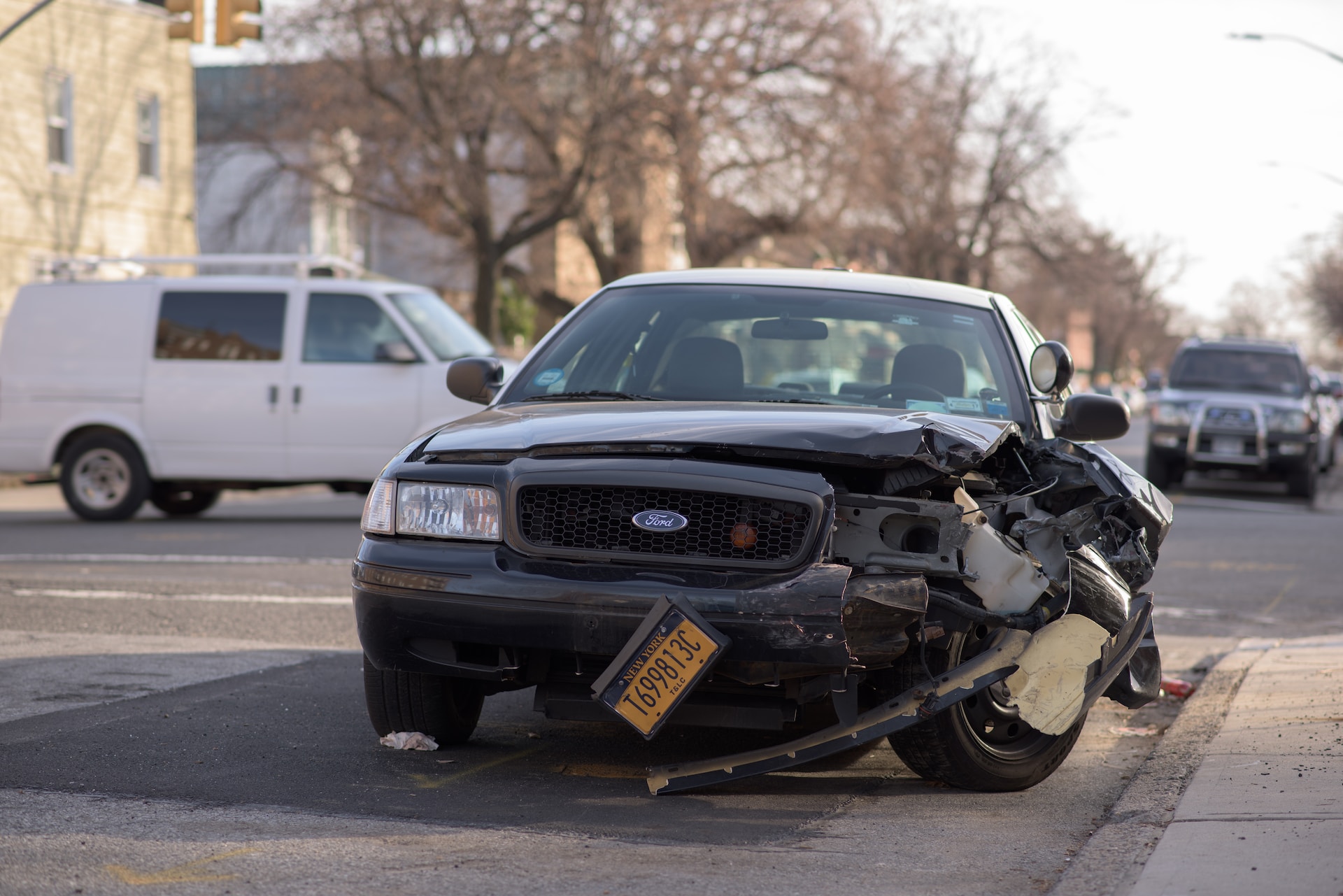
12. Road Conditions
Road conditions are the physical state of the road surface and the surrounding environment. They can affect your driving performance and safety by creating hazards, obstacles, or challenges. Some common examples of poor road conditions are potholes, cracks, debris, wet or slippery surfaces, snow or ice, fog or smoke, or glare or darkness.
Road conditions are a contributing factor in many traffic accidents in Georgia and nationwide. According to NHTSA, road conditions were involved in 22% of fatal crashes in the U.S. in 2019. In Georgia, road conditions were involved in 18% of fatal crashes in 2019.
To prevent road condition-related accidents, you should:
- Check the weather and road conditions before you start driving. You can use online sources, radio stations, or phone apps to get the latest information on the weather and road conditions in your area and along your route. You can also call 511 or visit www.511ga.org for Georgia-specific information.
- Adjust your speed and following distance according to the road conditions. You may need to slow down and increase your following distance when the road is wet, slippery, rough, or crowded. You may also need to use your headlights, windshield wipers, or defroster to improve your visibility.
- Avoid driving in hazardous road conditions if possible. If the road conditions are too dangerous or unpredictable, such as during a storm, flood, fire, or landslide, you may want to postpone your trip or find an alternative route. If you are already on the road and encounter hazardous road conditions, you may want to pull over to a safe location and wait for them to improve.
- Report any problems or defects on the road to the authorities. If you notice any potholes, cracks, debris, or other issues on the road that can pose a risk to you or other drivers, you can report them to the Georgia Department of Transportation (GDOT) by calling 511.
13. Vehicle Defects
Vehicle defects are any faults or malfunctions in your vehicle’s components or systems that can affect its performance and safety. They can be caused by manufacturing errors, design flaws, wear and tear, improper maintenance, or damage from crashes or other incidents. Some common examples of vehicle defects are faulty brakes, steering, tires, airbags, seat belts, or lights.
Vehicle defects are a contributing factor in some traffic accidents in Georgia and nationwide. According to NHTSA, vehicle defects were involved in 2% of fatal crashes in the U.S. in 2019. In Georgia, vehicle defects were involved in 1% of fatal crashes in 2019.
To prevent vehicle defect-related accidents, you should:
- Maintain your vehicle regularly and properly. You should follow the manufacturer’s recommendations and schedule for servicing and inspecting your vehicle. You should also check your vehicle’s fluids, tires, brakes, lights, and other components before every trip.
- Repair or replace any faulty or damaged parts as soon as possible. If you notice any signs of trouble or malfunction in your vehicle, such as noises, leaks, vibrations, or warning lights, you should take your vehicle to a mechanic or a dealer and have it fixed or replaced immediately.
- Check for recalls and safety alerts on your vehicle. Recalls and safety alerts are issued by the manufacturers or the NHTSA when they discover a defect that can pose a risk to the drivers or the public. You can check for recalls and safety alerts on your vehicle by entering your vehicle identification number (VIN) on this website: https://www.nhtsa.gov
- Report any problems or complaints on your vehicle to the authorities. If you experience any problems or complaints with your vehicle that can affect its performance and safety, you can report them to the NHTSA by calling 1-888-327-4236 or visiting https://www-odi.nhtsa.dot.gov
14. Weather Conditions
Weather conditions are the atmospheric phenomena that occur in a given place and time. They can affect your driving performance and safety by creating hazards, obstacles, or challenges. Some common examples of adverse weather conditions are rain, snow, ice, fog, wind, or heat.
Weather conditions are a contributing factor in many traffic accidents in Georgia and nationwide. According to NHTSA, weather conditions were involved in 16% of fatal crashes in the U.S. in 2019. In Georgia, weather conditions were involved in 10% of fatal crashes in 2019.
To prevent weather condition-related accidents, you should:
- Check the weather forecast before you start driving. You can use online sources, radio stations, or phone apps to get the latest information on the weather forecast in your area and along your route. You can also call 511 or visit www.511ga.org for Georgia-specific information.
- Adjust your speed and following distance according to the weather conditions. You may need to slow down and increase your following distance when the weather is wet, slippery, snowy, icy, foggy, or windy. You may also need to use your headlights, windshield wipers, or defroster to improve your visibility.
- Avoid driving in severe weather conditions if possible. If the weather conditions are too dangerous or unpredictable, such as during a storm, flood, fire, or tornado, you may want to postpone your trip or find an alternative route. If you are already on the road and encounter severe weather conditions, you may want to pull over to a safe location and wait for them to improve.
- Prepare your vehicle and yourself for different weather conditions. You may want to equip your vehicle with appropriate tires, chains, antifreeze, or other accessories for different weather conditions. You may also want to carry an emergency kit with items such as a flashlight, jumper cables, blankets, water, food, or a first aid kit in case of a breakdown or a crash.
15. Animal-Related Crashes
Animal-related crashes are those that involve an animal on or near the road. They can cause damage to your vehicle, injury to yourself or others, or death to the animal or yourself. The most common animals involved in crashes are deer, but other animals such as dogs, cats, cows, horses, or bears can also pose a risk.
Animal-related crashes are a common problem in Georgia and nationwide. According to NHTSA, animal-related crashes were involved in 558 fatalities in the U.S. in 2019. In Georgia, animal-related crashes were involved in 14 fatalities in 2019.
To prevent animal-related crashes, you should:
- Be alert and watch out for animals on or near the road. Animals are more active and unpredictable at dawn and dusk, during mating and migration seasons, and in rural or wooded areas. You should scan the road ahead and the sides for any signs of animals or their eyes reflecting your headlights.
- Slow down and brake gently if you see an animal on or near the road. Do not swerve or panic, as this can cause you to lose control of your vehicle or hit another vehicle or object. If possible, flash your lights or honk your horn to scare the animal away.
- Follow the posted signs and warnings for animal crossings. These signs and warnings are placed in areas where animals are known to cross frequently or pose a higher risk. You should obey the speed limit and be extra cautious in these areas.
- Report any injured or dead animals on the road to the authorities. If you hit an animal or see an injured or dead animal on the road, you should pull over to a safe location and call 911 or *GSP (*477) and report it to the Georgia State Patrol. Do not approach or touch the animal, as it may be dangerous or carry diseases.
16. Work Zone Crashes
Work zone crashes are those that occur in areas where road construction or maintenance is taking place. They can cause damage to your vehicle, injury to yourself or others, or death to the workers or yourself. The most common causes of work zone crashes are speeding, distraction, impatience, or failure to follow the signs and directions.
Work zone crashes are a serious problem in Georgia and nationwide. According to NHTSA, work zone crashes were involved in 842 fatalities in the U.S. in 2019. In Georgia, work zone crashes were involved in 27 fatalities in 2019.
To prevent work zone crashes, you should:
- Pay attention and follow the signs and directions in work zones. You should look for signs that indicate the start and end of the work zone, the speed limit, the lane closures or shifts, the detours or exits, and the workers or flaggers. You should also follow the directions of the workers or flaggers and obey their signals.
- Slow down and leave enough space in work zones. You should reduce your speed and increase your following distance when entering and driving through work zones. You should also avoid changing lanes or passing other vehicles in work zones, unless directed otherwise.
- Be patient and courteous in work zones. You should expect delays and plan ahead for your trip. You should also be respectful and cooperative with other drivers and workers in work zones. Do not honk, tailgate, or cut off other vehicles in work zones.
- Stay alert and avoid distractions in work zones. You should focus on the road and the traffic around you. Do not use your phone, eat, drink, or do anything else that can take your attention away from driving.
17. School Bus-Related Crashes
School bus-related crashes are those that involve a school bus or a vehicle that is transporting children to or from school or school-related activities. They can cause damage to your vehicle, injury to yourself or others, or death to the children or yourself. The most common causes of school bus-related crashes are speeding, distraction, impatience, or failure to stop for a school bus.
School bus-related crashes are a rare but serious problem in Georgia and nationwide. According to NHTSA, school bus-related crashes were involved in 117 fatalities in the U.S. in 2019. In Georgia, school bus-related crashes were involved in 4 fatalities in 2019.
To prevent school bus-related crashes, you should:
- Stop for a school bus when its red lights are flashing and its stop arm is extended. This means that children are getting on or off the bus and may cross the road. You must stop at least 20 feet away from the bus and remain stopped until the red lights stop flashing and the stop arm is retracted.
- Be alert and watch out for children near a school bus. Children may not always follow the traffic rules or be aware of their surroundings. They may run into the road without looking or cross behind or between parked cars. You should scan the road ahead and the sides for any signs of children or their movements.
- Follow the posted signs and warnings for school zones. These signs and warnings are placed in areas where children are likely to be present during school hours or activities. You should obey the speed limit and be extra cautious in these areas.
- Be patient and courteous near a school bus. You should expect delays and plan ahead for your trip. You should also be respectful and cooperative with other drivers and children near a school bus. Do not honk, tailgate, or pass a school bus or other vehicles near a school bus.
18. Railroad Crossing Crashes
Railroad crossing crashes are those that occur at intersections where a road crosses a railroad track. They can cause damage to your vehicle, injury to yourself or others, or death to the train passengers or yourself. The most common causes of railroad crossing crashes are speeding, distraction, impatience, or failure to yield to a train.
Railroad crossing crashes are a rare but serious problem in Georgia and nationwide. According to NHTSA, railroad crossing crashes were involved in 293 fatalities in the U.S. in 2019. In Georgia, railroad crossing crashes were involved in 8 fatalities in 2019.
To prevent railroad crossing crashes, you should:
- Look and listen for a train before crossing a railroad track. You should look both ways and listen for any signs of a train, such as lights, bells, horns, or whistles. You should also obey any signs, signals, or gates at the railroad crossing. If there is a sign that says “Stop”, “Do Not Enter”, or “Railroad Crossing”, you must stop and wait until it is safe to cross.
- Never try to beat a train or go around a gate at a railroad crossing. Trains are faster and quieter than they appear. They cannot stop quickly or swerve to avoid you. If you try to beat a train or go around a gate, you are risking your life and the lives of others.
- Never stop or park on a railroad track or within 15 feet of a railroad track. If your vehicle stalls or gets stuck on a railroad track, get out of the vehicle and move away from the track as quickly as possible. Call 911 or the emergency number posted at the railroad crossing and report your location and situation.
- Be aware of multiple tracks and trains at a railroad crossing. Some railroad crossings have more than one track or more than one train passing through at the same time. You should always look both ways and wait until all tracks are clear before crossing.
19. Rollover Crashes
Rollover crashes are those that involve a vehicle tipping over onto its side or roof. They can cause damage to your vehicle, injury to yourself or others, or death to the occupants or yourself. The most common causes of rollover crashes are speeding, loss of control, overcorrection, collision with another vehicle or object, or vehicle type.
Rollover crashes are a serious problem in Georgia and nationwide. According to NHTSA, rollover crashes were involved in 7,925 fatalities in the U.S. in 2019, accounting for 22% of all traffic deaths. In Georgia, rollover crashes were involved in 247 fatalities in 2019, accounting for 17% of all traffic deaths.
To prevent rollover crashes, you should:
- Reduce your speed and avoid sudden maneuvers when driving. You should drive at a safe and reasonable speed according to the road conditions and traffic flow. You should also avoid making sharp turns, swerving, or braking hard, as these can cause you to lose control of your vehicle or overcorrect your steering.
- Maintain your vehicle properly and check your tires regularly. You should follow the manufacturer’s recommendations and schedule for servicing and inspecting your vehicle. You should also check your tires’ pressure, tread, and alignment before every trip. Worn or underinflated tires can increase the risk of rollover crashes.
- Load your vehicle properly and evenly. You should avoid overloading your vehicle or placing heavy or bulky items on the roof or in the rear. You should also distribute the weight of your cargo evenly throughout the vehicle. Improper loading can affect your vehicle’s stability and handling and increase the risk of rollover crashes.
- Always wear your seat belt and make sure everyone in your vehicle is buckled up properly. Seat belts can prevent you from being ejected or thrown around in a rollover crash. Ejection or partial ejection is the leading cause of death in rollover crashes.
20. Head-On Crashes
Head-on crashes are those that involve two vehicles colliding with each other from opposite directions. They can cause damage to your vehicle, injury to yourself or others, or death to the occupants or yourself. The most common causes of head-on crashes are crossing the center line, driving the wrong way, passing unsafely, or losing control.
Head-on crashes are a rare but deadly problem in Georgia and nationwide. According to NHTSA, head-on crashes were involved in 3,472 fatalities in the U.S. in 2019, accounting for 10% of all traffic deaths. In Georgia, head-on crashes were involved in 181 fatalities in 2019, accounting for 12% of all traffic deaths.
To prevent head-on crashes, you should:
- Stay in your lane and keep to the right of the center line. You should only cross the center line when it is safe and legal to do so, such as when passing another vehicle or turning left. You should also avoid driving on the shoulder or the median, as these can cause you to drift into oncoming traffic.
- Avoid driving the wrong way on a road or a ramp. You should always follow the signs and markings that indicate the direction of traffic on a road or a ramp. You should also pay attention to the color and shape of the signs and markings. Red signs or markings mean “stop” or “do not enter”. Yellow signs or markings mean “caution” or “divided highway”. White signs or markings mean “one way” or “keep right”.
- Pass other vehicles safely and legally. You should only pass another vehicle when it is safe and legal to do so, such as when there is a broken yellow line on your side of the road or when there is enough space and visibility to complete the maneuver. You should also signal your intentions, check your mirrors and blind spots, and return to your lane as soon as possible.
- Maintain control of your vehicle at all times. You should drive at a safe and reasonable speed according to the road conditions and traffic flow. You should also avoid distractions, impairments, fatigue, or other factors that can affect your driving performance. If you lose control of your vehicle, try to steer away from oncoming traffic and brake gradually.
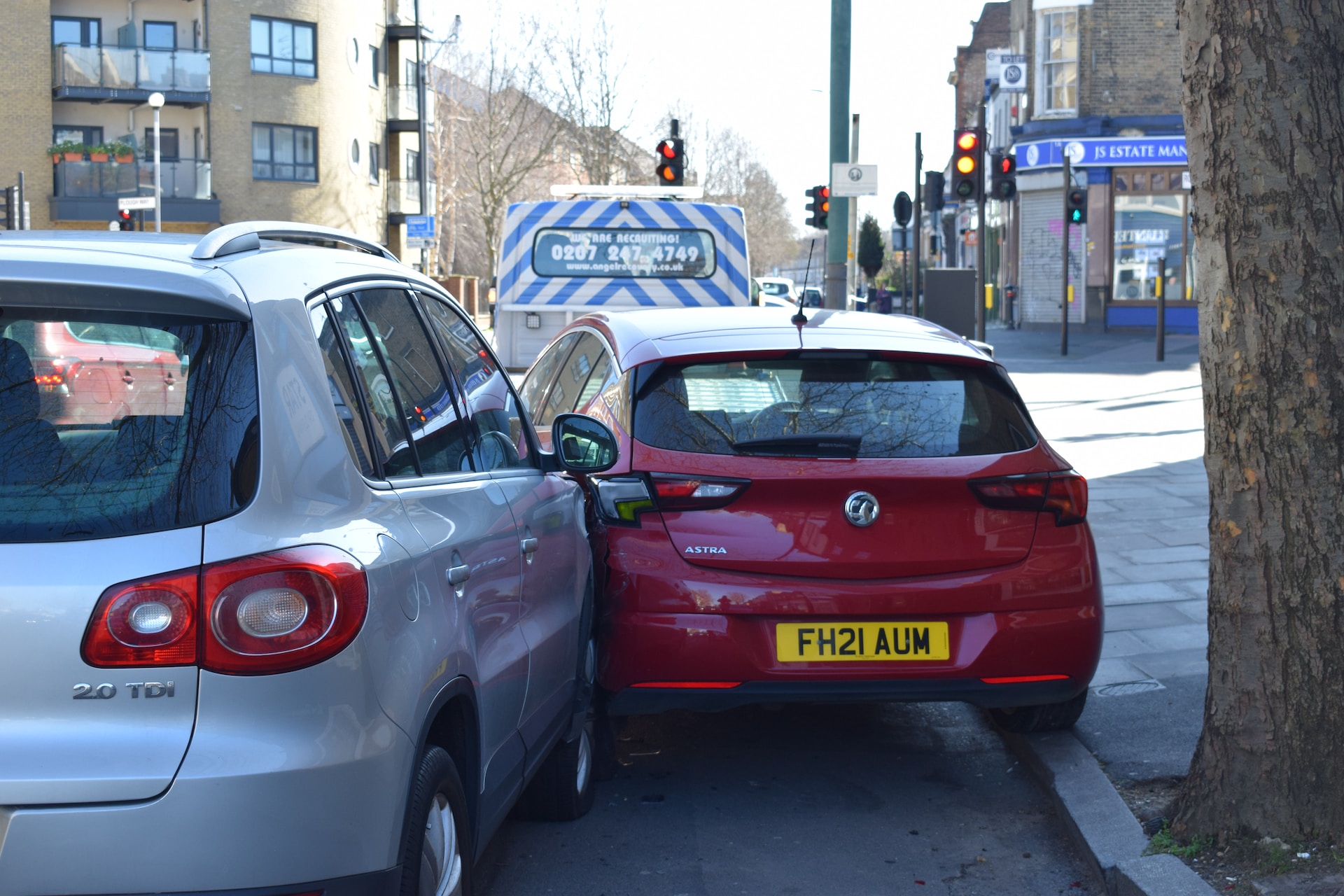
Conclusion
Traffic accidents are a leading cause of injury and death in Georgia. However, they are not inevitable or unavoidable. By understanding the common factors that contribute to crashes and following the tips and resources provided in this article, you can reduce your risk of being involved in a traffic accident and protect yourself and others from harm.
Remember, safe driving is not only a skill, but also a responsibility. You have the power and the duty to make the roads safer for everyone. Drive smart, drive safe, and drive alive.
